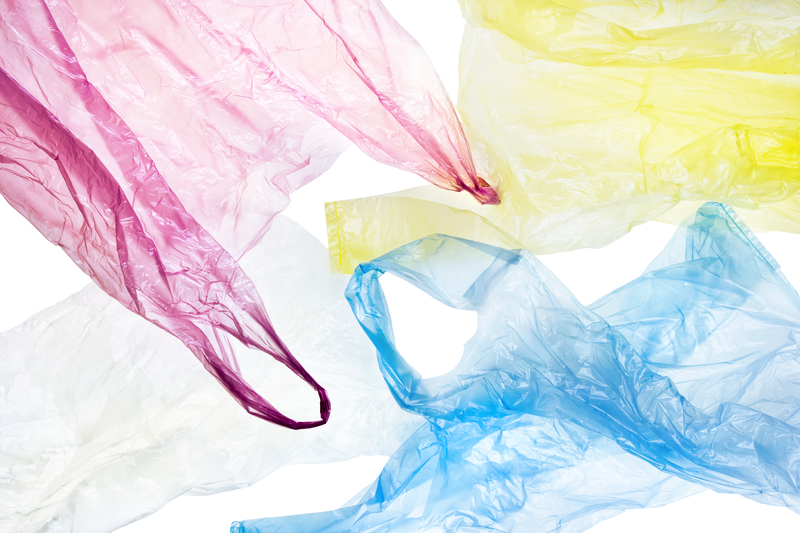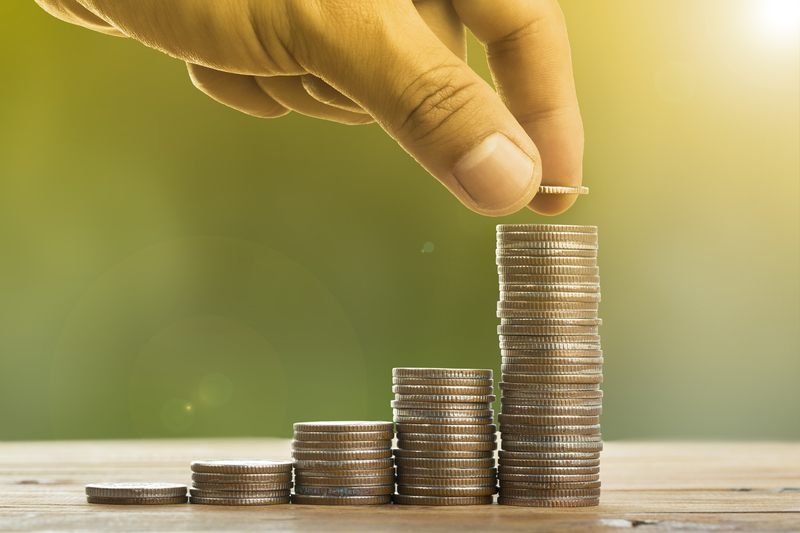The Science Behind Effective Packaging and Cardboard Disposal
Understanding the intricate balance between packaging efficiency and responsible cardboard disposal is more crucial than ever in an environmentally conscious world. Modern packaging solutions do more than just protect products--they ensure sustainability, minimize waste, and streamline logistics. In this comprehensive article, we'll unravel the science driving effective packaging strategies and highlight the best practices for cardboard recycling and disposal, fostering a greener future for businesses and consumers alike.

Why is Packaging Science Important?
The primary role of packaging is to protect products during storage, transit, and handling. However, the science of packaging delves far deeper than just product protection. Here's why considering science-driven solutions is crucial:
- Resource Efficiency: Optimizing materials and design reduces raw material use and environmental impact.
- Consumer Satisfaction: Well-packaged products arrive safely, boosting brand reputation and customer loyalty.
- Regulatory Compliance: Adhering to environmental regulations reduces financial and legal risks.
- Waste Reduction: Thoughtful design eases recycling and limits landfill contributions.
Elements of Effective Packaging
To achieve optimal performance, effective packaging must balance several critical factors, including protection, practicality, marketing needs, and environmental impact. Let's explore these components:
-
Material Selection: The choice of materials profoundly influences packaging performance and sustainability.
- Cardboard is prevalent due to its lightweight, strength, and recyclability.
- Bioplastics and plant-based solutions are gaining popularity for eco-friendly packaging.
- Corrugated cardboard provides extra rigidity, ideal for shipping heavy or fragile goods.
-
Design Innovation: Engineering packaging structures that minimize waste while maintaining protection is a cornerstone of packaging science.
- Influences everything from box shapes to folding mechanisms and closure techniques.
- Smart design means using less material without compromising quality.
-
Barrier Properties: Effective packaging often integrates barriers to moisture, oxygen, or light, preserving product integrity.
- Coatings and laminates on cardboard extend shelf life and durability.
- Some advanced packaging includes antimicrobial layers or temperature sensitivity.
-
Print and Branding: Packaging serves as a powerful marketing tool. High-quality printing and unique designs enhance brand visibility.
- Ink choices and print technologies affect both aesthetics and recyclability.
Understanding Cardboard: Types and Properties
Before diving into disposal, it's essential to comprehend the makeup of cardboard packaging. Cardboard is not a single material but an umbrella term for several paper-based packaging products, each with unique characteristics and disposal methods.
Common Types of Cardboard Packaging
- Corrugated Cardboard: Made from a fluted corrugated sheet and one or two flat linerboards. It's strong, resilient, and widely used for shipping boxes.
- Paperboard (Chipboard): Thinner, lightweight, and commonly found in cereal boxes, tissue boxes, and other retail packaging.
- Greyboard: Utilized for rigid boxes, book covers, and certain luxury packaging.
The composition and thickness of these materials impact not only their end-use but also their path through the recycling and disposal chain.
The Lifecycle of Packaging Materials
Grasping the full environmental impact of packaging and cardboard demands understanding their entire lifecycle:
-
Raw Material Extraction:
- Cardboard is primarily made from wood pulp, though recycled fibers are increasingly common.
- Sustainable sourcing is key to reducing deforestation and preserving ecosystems.
-
Manufacturing:
- Energy-efficient processes and water recycling efforts lower carbon footprints.
-
Distribution and Use:
- Optimized packaging design leads to reduced fuel use for transportation.
- Reusable or collapsible packaging cuts both costs and waste.
-
Disposal or Recycling:
- Efficient cardboard disposal and recycling close the loop in the circular economy model, turning waste into a resource.
Eco-Friendly Packaging Innovations
Driven by growing environmental awareness, brands are investing in sustainable packaging solutions. Here are some key innovations:
- Biodegradable and Compostable Materials: Options such as mushroom-based packaging and PLA bioplastics are reducing reliance on petrochemical materials.
- Edible Packaging: Some companies are experimenting with edible films for food packaging, reducing waste altogether.
- Recycled Content: Increasing the use of recycled fibers in cardboard boxes lowers the demand for virgin materials.
- Water- and Soy-Based Inks: Improving recyclability and lowering environmental toxicity.
Each of these innovations enhances sustainability while maintaining the effectiveness and protective features required by modern packaging.
Cardboard Disposal: Best Practices and Recycling Processes
Why Proper Cardboard Disposal Matters
Each year, millions of tons of cardboard packaging pass through homes and businesses. While cardboard is among the most recycled materials worldwide, much still ends up in landfills. Learning the right way to dispose of cardboard is vital for reducing waste and conserving resources.
Steps for Effective Cardboard Disposal
Here are the key practices every consumer and business should follow for responsible cardboard disposal:
- Remove Contaminants: Separate food, plastics, and any non-paper materials from your cardboard recycling. Clean, dry cardboard is essential for recycling.
- Flatten Boxes: Breaking down boxes conserves space, improves efficiency during collection, and makes the recycling process easier.
- Check Local Guidelines: Some communities require different types of cardboard to be sorted or prepared in specific ways.
- Bulk Disposal: For businesses disposing of large quantities, baling cardboard makes handling and transport more efficient.
- Reuse Where Possible: Cardboard boxes are perfect for storage, moving, or DIY projects before recycling.
The Cardboard Recycling Process Explained
- Collection and Transport: Cardboard is gathered from collection points and taken to recycling facilities.
- Sorting: Cardboard is sorted by type and grade. Corrugated and paperboard are typically recycled separately.
- Shredding and Pulping: Boxes are shredded and mixed with water to create a pulp. Contaminants are filtered out.
- De-Inking and Cleaning: Any remaining inks or adhesives are removed.
- Re-forming: The clean pulp is pressed and rolled into sheets, which are dried and cut for new packaging production.
Environmental Impact: The Benefits of Effective Cardboard Recycling
Proper cardboard recycling and disposal have a profound positive impact on the environment. Let's examine the far-reaching benefits:
- Reduction in Landfill Waste: Recycling cardboard significantly cuts down on landfill volume, reducing greenhouse gas emissions from decomposition.
- Resource Conservation: Using recycled fibers means fewer trees are harvested for new cardboard production.
- Energy Savings: Creating new cardboard from recycled materials uses less energy than virgin production.
- Lower Pollution: Recycling reduces water and air pollution associated with manufacturing processes.
Did you know?
According to the Environmental Protection Agency (EPA), recycling one ton of cardboard saves over nine cubic yards of landfill space and conserves 46 gallons of oil. These statistics highlight just how crucial responsible cardboard disposal is for our planet!
Common Myths About Cardboard Packaging and Disposal
Despite its ubiquity, misconceptions about cardboard recycling persist. Let's debunk a few for a clearer perspective:
-
Myth #1: All Cardboard Can Be Recycled.
Reality: Cardboard contaminated with grease, food residues, or coated with plastic films is often unsuitable for recycling. -
Myth #2: It Doesn't Matter If I Flatten Boxes.
Reality: Flattened boxes are easier to transport and process, making the recycling system more efficient. -
Myth #3: Packaging Innovation Only Benefits Businesses.
Reality: Modern packaging advances reduce costs, save resources, and benefit the environment and consumers alike.
Tips for Businesses: Optimizing Packaging and Disposal
Companies wield tremendous influence over the sustainability of packaging solutions. Here's how businesses can stay on the cutting edge:
- Audit Packaging: Analyze packaging usage and switch to sustainable alternatives where possible.
- Right-Size Packaging: Avoid oversized boxes, which waste materials and increase shipping emissions.
- Supplier Collaboration: Work with vendors using recycled or certified-sustainable materials.
- Education and Training: Teach staff about correct cardboard disposal and recycling protocols.
- Promote Reusability: Innovate packaging that serves a second function or can be easily reused.

The Future of Packaging Science and Cardboard Disposal
Looking ahead, continuous innovation in packaging science will further align with the goals of waste reduction, resource efficiency, and environmental stewardship. Intelligent packaging, biodegradable coatings, and greater emphasis on the circular economy are shaping tomorrow's packaging landscape. Advanced methods for cardboard recycling and the rise of zero-waste packaging design will help close the materials loop even further.
Consumers and companies play vital roles in this ecosystem by making informed choices that favor sustainable solutions. Simple steps like proper cardboard disposal and championing brands committed to responsible packaging can collectively drive enormous positive change.
Conclusion: Rethinking Packaging and Cardboard Disposal for a Sustainable Future
The science behind effective packaging and responsible cardboard recycling is more than just an industry trend--it's a cornerstone of modern sustainability. From the raw materials selected to the cardboard recycling process that gives materials new life, each step has environmental implications.
By embracing innovative, eco-friendly packaging solutions and committing to thoughtful disposal practices, both businesses and consumers contribute to a circular economy that conserves resources and safeguards our planet for future generations. Next time you open a package, consider the science, effort, and impact behind not just what's inside, but the box itself!
Remember: Simple actions--like flattening your boxes or choosing products with sustainable packaging--help make a world of difference.